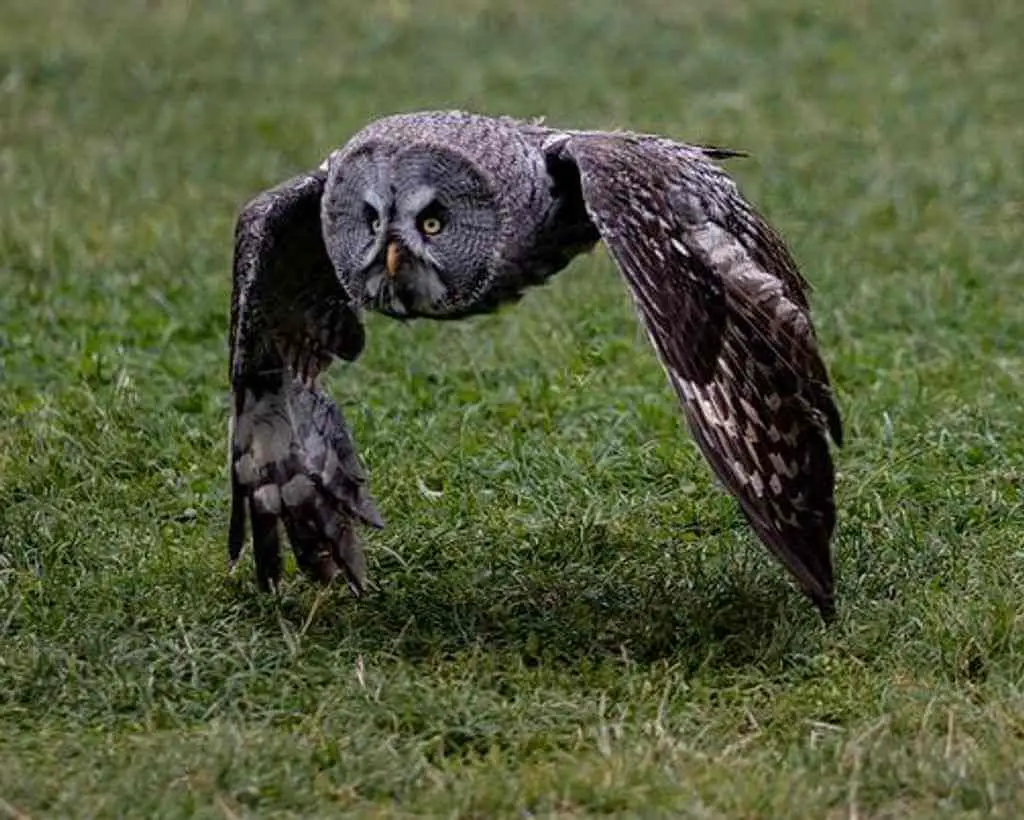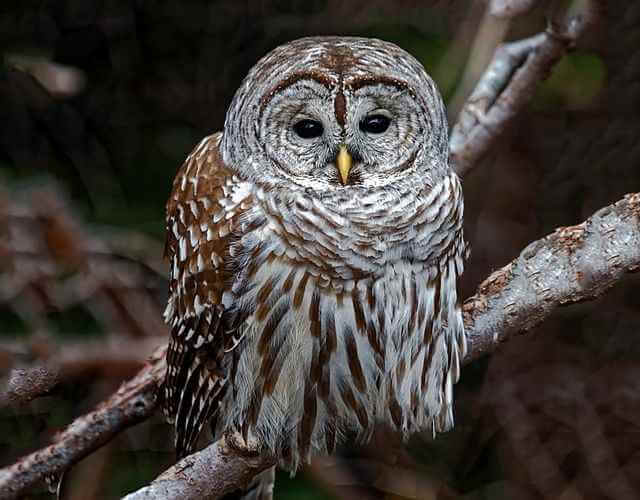Discover the intriguing world of the types of owls in Ohio! From the elusive Eastern Screech-Owl to the majestic Barred Owl, Ohio is home to a diverse range of owl species. Join us as we explore their unique characteristics, habitats, and learn more about these captivating birds.
Types of Owls in Ohio
Barred Owl
- Length: 16.9-19.7″ in (43-50 cm)
- Weight: 16.6-37.0 oz. (470-1050 g)
- Wingspan: 39.0-43.3″ in (99-110 cm)
- Scientific Name: Strix varia
- Frequency of Occurrence: 1.54% (Statistic by: eBird)
- Where To Find Them: Some of the best places to see the barred owl in Ohio are in the Amish country near Lancaster and Holmes counties, near Millersburg in Muskingum County, and at the Great Lakes Naval Training Center on Lake Erie.
General Information: The barred owl is a large, powerful owl found in the eastern and central United States. This species has a wide distribution range, occurring from the Atlantic to the Great Lakes regions. Barred owls typically inhabit open forests, but they are also common in urban areas.
They feed mainly on small mammals and birds, but will also consume carrion. Barred owls nest in cavities in trees or on high ground. Females lay two to five eggs, which hatch after about 28 days.
Great Horned Owl

- Length: 17.7-24.8 in (45-63 cm)
- Weight: 32.1-88.2 oz. (910-2500 g)
- Wingspan: 39.8-57.1 in (101-145 cm)
- Scientific Name: Bubo virginianus
- Frequency of Occurrence: 1.29%
- Where To Find Them: The Great Horned Owl is a large owl that can be found in many parts of the United States. However, some of the best locations to see this owl are in Ohio. These owls can be found throughout the state, but some areas that have a higher concentration of them include the Cleveland and Akron areas.
General Information: Great Horned Owl is a large, powerful owl with a broad head and conspicuous facial features. It is the largest owl in North America and the fifth-largest owl in the world. The Great Horned Owl is distributed throughout most of Canada and Alaska, but its range extends into much of the United States as well. In Canada, it is found mostly in forested areas, but in the United States it ranges from open country to woodlands and even urban areas.
The diet of Great Horned Owls includes small mammals, birds, and reptiles. They are especially skilled at hunting during the night, but they will also take prey during the day if they can catch it unawares. Nests are built in high trees or on cliff faces, often near water sources.
Related Post: 35 Fun Facts About The Great Horned Owl (Detailed)
Eastern Screech Owl
- Length: 6.3-9.8″ in (16-25 cm)
- Weight: 4.3-8.6 oz. (121-244 g)
- Wingspan: 18.9-24.0″ in (48-61 cm)
- Scientific Name: Megascops asio
- Frequency of Occurrence: 1.16%
- Where To Find Them: Eastern Screech Owl can be found in many locations in Ohio, but some of the best places to see them are the Cuyahoga Valley National Park, Brecksville Reservation, and Rocky River State Forest.
General Information: The Eastern Screech Owl is a small owl found in the eastern United States and Canada. It is the most common owl in the eastern United States, and is also found in parts of southern Ontario. The Eastern Screech Owl prefers woodlands with plenty of open areas for hunting.
It eats mostly large insects, but will also eat birds and other small animals. Eastern Screech Owls mate in late winter or early spring, and usually have two to six young per year. They nest on the ground in low bushes or tree cavities, and are very good at hiding their nests from predators.
Short-eared Owl
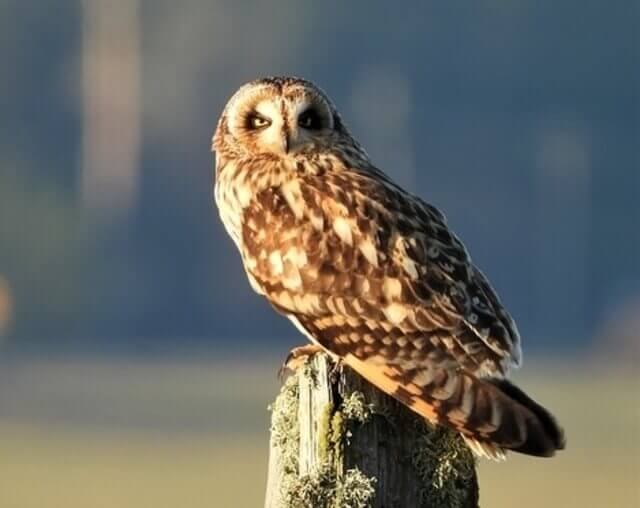
- Length: 13.4-16.9 in (34-43 cm)
- Weight: 7.3-16.8 oz. (206-475 g)
- Wingspan: 33.5-40.5 in (85-103 cm)
- Scientific Name: Asio flammeus
- Frequency of Occurrence: 0.3181%
- Where To Find Them: The Short-eared Owl is a common bird in Ohio, and can be seen at many different locations. Some of the best places to see this owl are in the Appalachian Mountains, near Lake Erie, and in the Scioto River Valley.
General Information: The short-eared owl is a common owl found in most parts of North America. It is distributed throughout the eastern and central United States, as well as southern Canada. This owl prefers open areas with plenty of trees, such as wooded parks and forests.
It eats mostly small rodents and birds, but will also consume larger prey on occasion. Short-eared owls are opportunistic hunters and will often hunt at night or during periods of low light. They nest in tree cavities, typically laying 1 to 11 eggs.
Snowy Owl
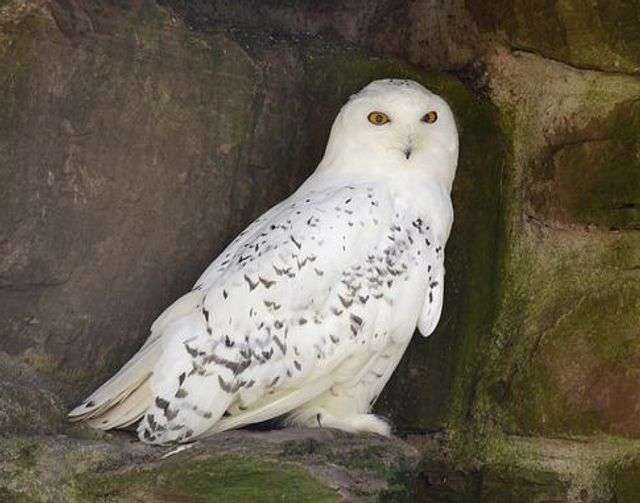
- Length: 20.5-27.9 in (52-71 cm)
- Weight: 56.4-104.1 oz. (1600-2950 g)
- Wingspan: 49.6-57.1 in (126-145 cm)
- Scientific Name: Bubo scandiacus
- Frequency of Occurrence: 0.2729%
- Where To Find Them: They can be found all over North America, but there are a few places in Ohio that are especially well-suited for seeing these impressive creatures. The best locations for viewing snowy owls in Ohio include Hocking Hills National Park and Oberlin College’s Lewis Field.
General Information: Snowy Owls are distributed throughout North America, with the exception of the southernmost tip of South America. The snowy Owl is found in all U.S. states except Hawaii and Alaska, as well as most provinces in Canada. It inhabits a variety of habitats including forests, tundra, and open areas near water.
The primary diet for snowy Owls consists of small mammals such as rabbits and hares, but they will also eat birds and other animals. Nests are built in trees or on high ground, but they have been known to nest on cliffsides and rocky outcroppings. Three to eleven eggs are incubated by the female for approximately 28 days.
Related Post: 48 Fun Facts About Snowy Owls (with Photos, ID & Info)
Northern Saw-whet Owl

- Length: 7.1-8.3 in (18-21 cm)
- Weight: 2.3-5.3 oz. (65-151 g)
- Wingspan: 16.5-18.9 in (42-48 cm)
- Scientific Name: Aegolius acadicus
- Frequency of Occurrence: 0.1454%
- Where To Find Them: Although they can be found in many locations throughout Ohio, some of the best places to spot a Northern Saw-whet Owl are in the Appalachian Mountains and the Great Lakes region. This owl is also known to be prevalent in areas near water sources, such as lakes and rivers.
General Information: The Northern Saw-whet Owl is a small owl found in the boreal forests of North America. It has a disjointed distribution, being found mainly in south central Canada and parts of the United States, but also extending into extreme northwestern Mexico.
The owl mainly inhabits coniferous and mixed forests, but can also be found in open habitats near water. Its diet consists mostly of small vertebrates, but it will also consume insects. The owl nests in tree cavities or on cliffs. It is not considered threatened by the IUCN, though its range is shrinking due to human activity and climate change.
Related Post: What is the Smallest Owl in North America?
Long-eared Owl
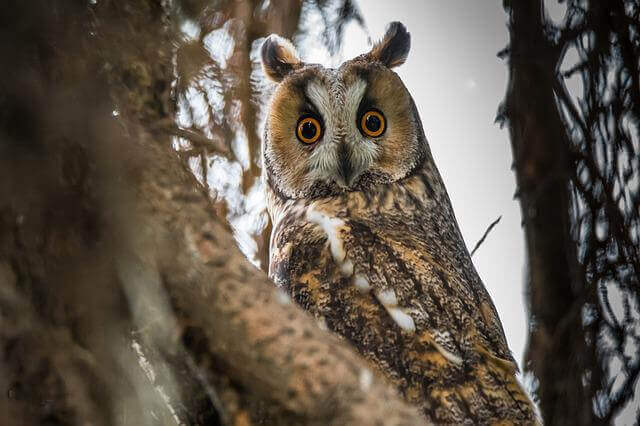
- Length: 13.8-15.8 in (35-40 cm)
- Weight: 7.8-15.3 oz. (220-435 g)
- Wingspan: 35.4-39.4 in (90-100 cm)
- Scientific Name: Asio otus
- Frequency of Occurrence: 0.1096%
- Where To Find Them: Ohio has many great places to see the Long-eared Owl. The best locations are in the Appalachian Mountains, in the northwestern part of the state, and on Beaver Island.
General Information: The Long-eared Owl is one of the most widespread owls in North America.These owls live in the temperate and boreal forests of North America, Europe, and Asia. This owl prefers open country with plenty of trees and shrubs for nesting, but will also make use of farmland, suburban parks, and even city buildings. The Long-eared Owl is a nocturnal hunter that hunts small mammals, birds, and insects.
It typically eats prey that is about the size of a mouse or smaller. The Long-eared Owl breeds in northern North America during the months of March through May. The female lays three to five eggs, which are incubated by the male for 28 days. Once hatched, the owls fledge in about 50 days and become independent.
Barn Owl
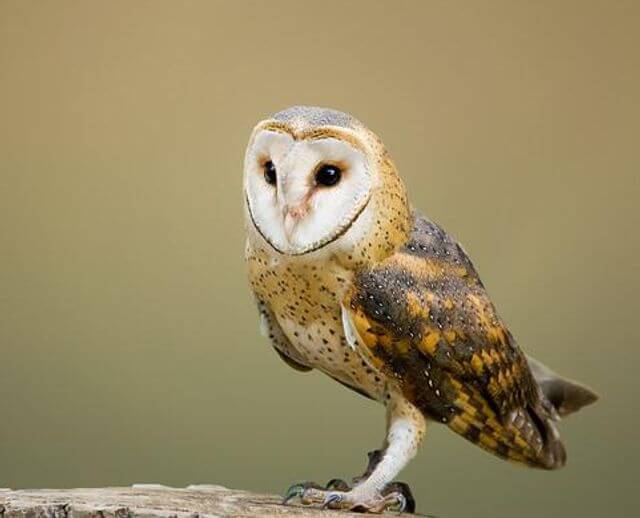
- Length: 12.6-15.8″ in (32-40 cm)
- Weight: 14.1-24.7 oz. (400-700 g)
- Wingspan: 39.4-49.2″ in (100-125 cm)
- Scientific Name: Tyto alba
- Frequency of Occurrence: 0.0566%
- Where To Find Them: Barn Owls can be found throughout most of Ohio, but some of the best locations to see them are in Athens County, Pike County and Ross County.
General Information: Barn owls are widespread throughout North America, ranging from the Arctic tundra to the tropical rainforest. They inhabit a variety of habitats, including woodlands, fields, and suburbs. Barn owls primarily hunt small animals such as mice and rats, but they have also been known to take on larger prey, such as rabbits and squirrels. They consume Small mammals
The barn owl is notably nocturnal in its habits and will often perch in a high tree or structure during the day. Nests are usually caves, burrows, cliff edges holes in trees, and crevices, rivers, and built of sticks and leaves inside a large tree or other sturdy structure, usually close to the ground. The female barn owl lays two to eighteen eggs, which she incubates for about 28-34 days before hatchinglings emerge.
Northern Hawk Owl
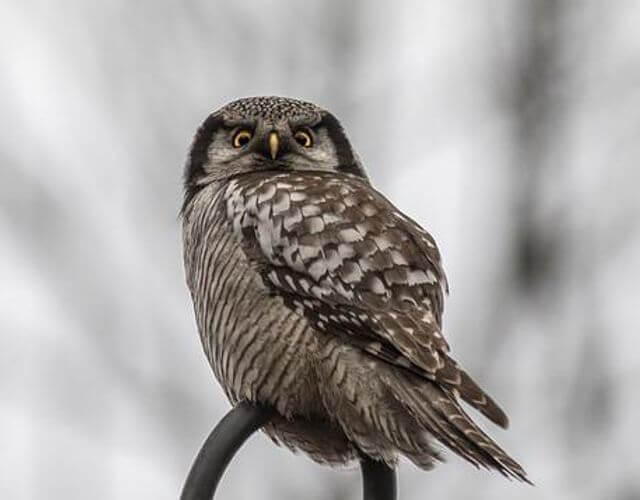
- Length: 14.2-17.7 in (36-45 cm)
- Weight: 8.5-16.0 oz. (240-454 g)
- Wingspan: 27.9 in (71 cm)
- Scientific Name: Surnia ulula
- Frequency of Occurrence: 0.0001%
- Where To Find Them: These owls can be found in a variety of locations across Ohio, but some of the best places to see them are at Raptor Ridge Wildlife Preserve in Greenville and at Lake Erie Nature Preserve.
General Information: The Northern Hawk Owl is a medium-sized owl found in the boreal forests of the north. It has a distribution range that extends from Alaska to Newfoundland and Labrador, and from the Yukon Territory to Manitoba. This owl is mainly found in coniferous and mixed forests, but can be found in other habitats such as open taiga, tundra, or farmland.
The Northern Hawk Owl eats mostly small animals such as rodents, birds and insects, but will also eat carrion. It nests in tree cavities or on cliffsides. The Northern Hawk Owl is not endangered, but it does face threats from forest fragmentation and degradation, climate change, and hunting.
Burrowing Owl
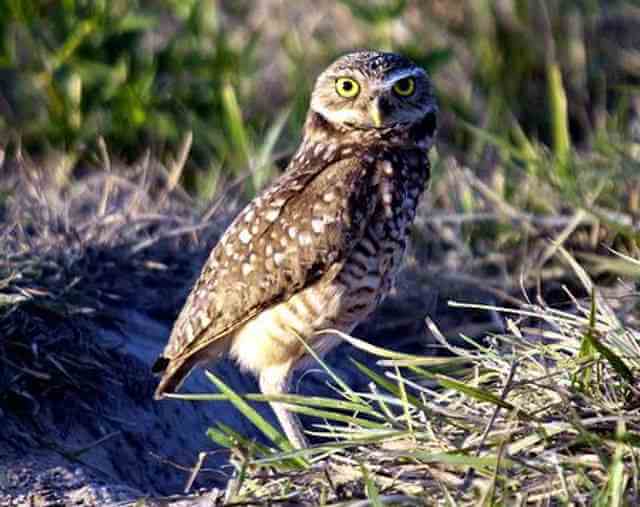
- Length: 7.5-9.8″ in (19-25 cm)
- Weight: 5.3 oz. (150 g)
- Wingspan: 21.6″ in (55 cm)
- Scientific Name: Athene cunicularia
- Frequency of Occurrence: 0.0001%
- Where To Find Them: The Burrowing Owl is a nocturnal bird that resides in the Ohio region. They can be found in a variety of locations, but some of the best places to see them are in Cuyahoga Valley National Park and Brecksville-Broadview Heights.
General Information: The burrowing owl is a small, but impressive owl. It has a wingspan of about 23 inches and weighs about two pounds. The burrowing owl is found in the eastern part of North America. Its distribution ranges from southern Canada to the Gulf of Mexico and west to the Rocky Mountains.
The habitat consists mostly of open grasslands, woodlands, and farmland, but it can also be found in urban areas. The diet consists mainly of large insects and rodents, but it will also eat birds and other small animals. Burrowing owls usually build their nests in underground burrows dug by ground squirrels, prairie dogs, badgers etc.
Related Post: Really Cool Burrowing Owl Facts That Will Amaze You!
Boreal Owl
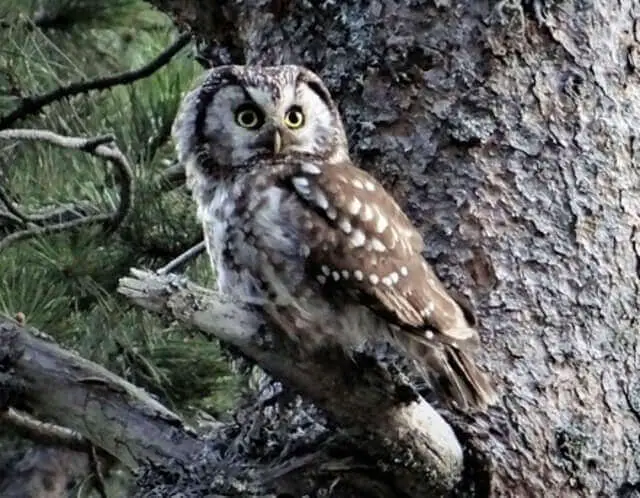
- Length: 8.3-11.0 in (21-28 cm)
- Weight: 3.3-7.6 oz (93-215 g)
- Wingspan: 21.6-24.4 in (55-62 cm)
- Scientific Name: Aegolius funereus
- Frequency of Occurrence: 0.0001%
- Where To Find Them: They can be seen in many different locations in the state, but some of the best spots are in the Appalachian Mountains and on the shores of Lake Erie.
General Information: The Boreal Owl is an owl found in the boreal forests of North America. The owl has a distribution range that extends from central Alaska to Labrador, and south to New England. The owl favors open areas with plenty of trees and shrubs for nesting, but can also be found in suburban areas and near water.
The Boreal Owl is a hunting owl, and its diet consists mainly of small mammals, such as mice and voles, but it also eats birds. The owls nest in tree cavities or on high perches, usually constructing a new nest every year.
Great Gray Owl
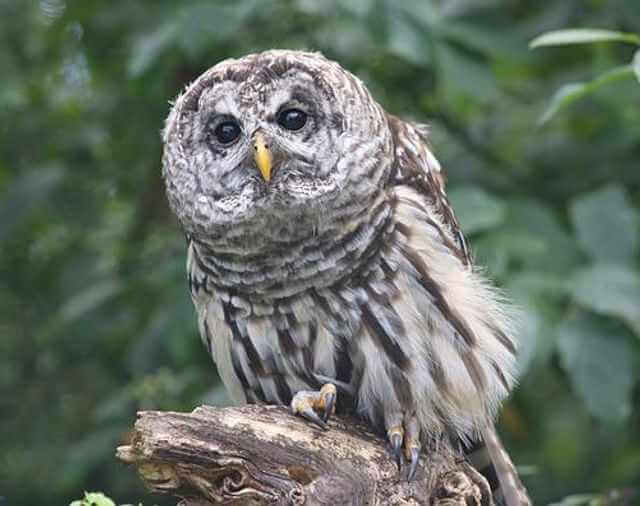
- Length: 24.0-33.0 in (61-84 cm)
- Weight: 24.7-60.0 oz. (700-1700 g)
- Wingspan: 53.9-60.2 in (137-153 cm)
- Scientific Name: Strix nebulosa
- Frequency of Occurrence: 0.0001%
- Where To Find Them: The Great Gray Owl is often seen hunting at night and can be seen soaring through the sky or gliding on silent wings. Some locations where they can be seen in Ohio include around Cleveland, Columbus, Cincinnati, Dayton and Akron.
General Information: The great gray owl is the largest owl in North America. It ranges throughout much of Canada and the United States, including all seven of the contiguous states. The great gray owl is a carnivore that hunts small mammals, birds, and even reptiles. Its diet includes rodents, rabbits, voles, and other small creatures.
Great gray owls typically nest in tree cavities, but will also use artificial nests if available. Females lay two to four eggs and incubate them for 34-37 days. Young owls leave the nest after about 12 weeks and are fully independent after about 18 months.
Related Post: 53 Fun Facts About The Great Gray Owl (Photos, ID & Info)
Frequently Asked Questions
What’s the most common owl in Ohio?
In Ohio, the most common owl is the barred owl. These owls can be found throughout the state, but are more common in the southern and eastern parts of the state. They are also common in neighboring states such as Kentucky and West Virginia. The barred owl is a nocturnal hunter that typically targets small mammals such as rabbits, squirrels, and rats.
Are great horned owls in Ohio?
Yes, there are great horned owls in Ohio! Though their population is small, these owls can be found throughout the state, including the Cleveland and Cincinnati metropolitan areas. While the number of great horned owls in Ohio is relatively small, they are still an important part of nature there.
Are barred owls in Ohio?
The barred owl is the most common owl in Ohio, and can be found throughout the state. While they may not be as commonly seen as some other species of owl, these birds make an appearance in many areas. This is a nocturnal hunter that prefers to live near humans and can often be seen perched high in trees looking for prey.
Do snowy owls live in Ohio?
Although rare, snowy owls can occasionally be seen living in the state of Ohio. These large owls are usually found in colder climates, such as those found in the northern United States or Canada. In Ohio, however, they have been known to make an appearance from time to time.
Related Post: 62 Most Common Backyard Birds In Ohio (Photos & Details)

